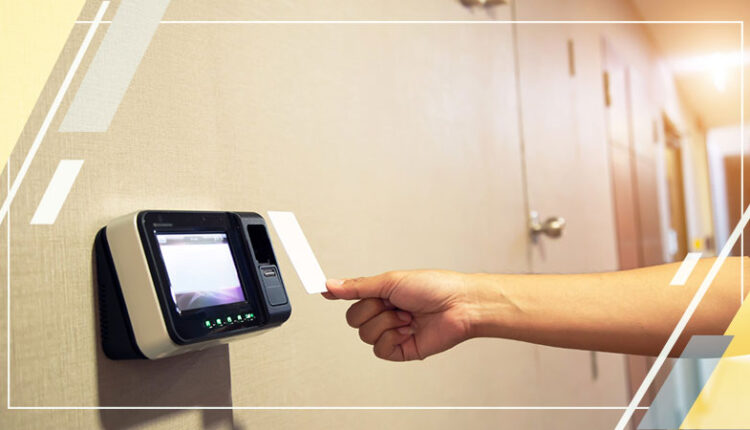The manufacturing industry is one of the most evolving and growing industries that cater to the diverse needs of businesses and consumers. The main component that is driving the growth of modern industrial and consumer applications is proximity sensors. These remarkable sensors enable efficient and reliable operation in diverse industries. From consumer goods to robotics, these sensors redefine safety and reliability in all domains.
Let’s learn more about these sensors and see how these no-contact sensors are reshaping various sectors.
What are Proximity Sensors?
A proximity sensor, or no-contact sensor, is a type of sensor that is capable of detecting the presence of nearby objects without the need for physical contact. These sensors are widely used in various applications, including industrial automation, consumer electronics, robotics, and more.
These no-contact sensors work by emitting an electromagnetic field and detecting changes in that field caused by the presence of an object. They do not require physical movement or heat transfer to sense the target object, making them suitable for delicate or unstable objects.
Understanding the Types of Proximity Sensors
No-contact sensors come in various types, each with distinct working principles and applications. Below are the common types of these sensors:
● Inductive Sensor
Inductive proximity sensors use inductance principles to detect the presence of a metal target without making physical contact. They are commonly used in industrial applications for detecting metal targets.
● Photoelectric Sensor
This type includes reflective, through-beam, and retro-reflective sensors that use light beams to detect objects. They are highly efficient for distance detection and can detect various types of objects.
● Ultrasonic Sensor
Ultrasonic proximity sensors emit high-pitched sounds and determine the distance between the sensor and the target based on the time it takes for the sound to reflect back to the sensor. They are widely used for distance detection.
● Magnetic Sensor
These sensors are mainly utilized to identify magnetic objects using their large sensing ranges. They incorporate glass and metal blades, allowing for quick magnetizing.
● Capacitive Sensor
Capacitive proximity sensors are suitable for detecting plastic and organic targets and can detect both metal and non-metal targets. They operate based on capacitance principles.
Exploring the Benefits of Proximity Sensors
Below are the major advantages offered by no-contact sensors:
- No contact sensors offer precise detection of objects within their specified range, ensuring accuracy in various applications.
- In industrial settings, these sensors contribute to safety by detecting the presence of personnel or obstacles and triggering timely alerts or safety measures.
- By eliminating the need for physical contact, no-contact sensors reduce mechanical wear and tear, thereby advancing the longevity of equipment and machinery.
- No-contact sensors are designed to activate or deactivate based on the presence of objects, thereby leading to energy savings through the minimization of unnecessary operation.
- Sealed sensors are resistant to dust, moisture, and contaminants, ensuring reliable performance in challenging environmental conditions.
- They offer a cost-effective solution for object detection compared to alternative methods, especially in high-volume manufacturing processes.
- Proximity sensors provide rapid response times, making them suitable for applications where real-time detection is crucial.
- In consumer electronics, no-contact sensors enable features such as touchless controls, thereby enhancing user interfaces for devices like smartphones and tablets.
- They play a crucial role in the Internet of Things (IoT) by enabling smart systems to detect and respond to the presence of objects or users.
Top 3 Players in Proximity Sensors Field
Below are three prominent manufacturers of no-contact sensors.
1. Schneider Electric
Schneider Electric is a leading company in the field of proximity sensors. The company offers standard, secure, reliable, and durable sensors with superior resistance to industrial environments. These sensors enhance manufacturing processes and efficiency. Schneider Electric’s proximity sensors are designed to provide reliable and accurate detection of objects without physical contact, contributing to the automation and optimization of industrial processes.
2. Panasonic Corporation
Panasonic Corporation is known for its diverse range of electronic products, including no-contact sensors. The company specializes in inductive proximity sensors that are compact and designed for non-contact position measurement. These sensors are available in different versions, offering front or side sensing with normally open or normally closed contacts and providing two detection frequencies to prevent mutual interference.
3. Balluff GmbH
Balluff GmbH is a leading provider of sensor and automation solutions, including no-contact sensors. The company’s no-contact sensors are designed to meet the needs of various industries, offering high standards and personal commitment. Balluff’s product range includes compact magnetostrictive sensors for non-contact position measurement, RFID handhelds, and sensors for hazardous areas.
Quick Recap
Proximity sensors are essential components in industrial automation, control systems, and consumer electronics. They have the ability to detect the presence or motion of objects without physical contact. These sensors are available in several types, such as inductive, capacitive, ultrasonic, photoelectric, and magnetic. All types offer non-contact detection, versatility, reliability, and energy efficiency. These no-contact sensors provide diverse benefits to meet the specific needs of various industries. As technology continues to advance, the role of non-contact sensors will further expand in several areas such as increased efficiency, automation, and the digitalization of industrial processes.


